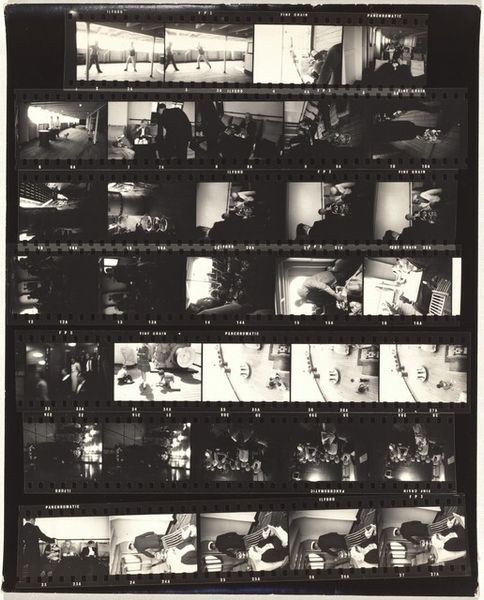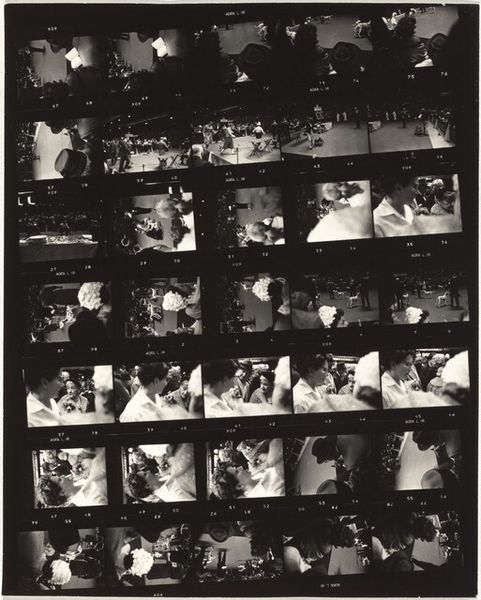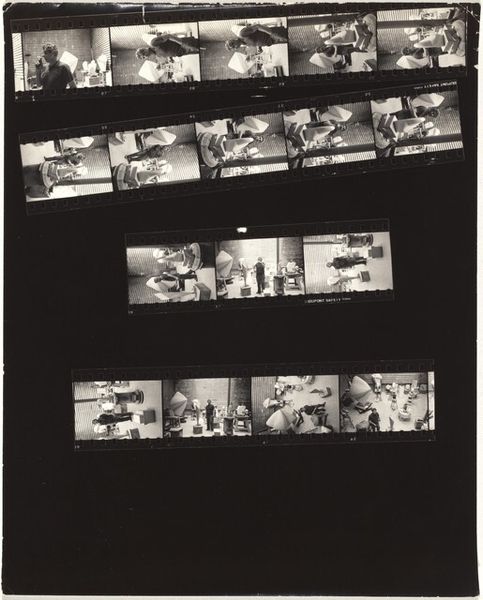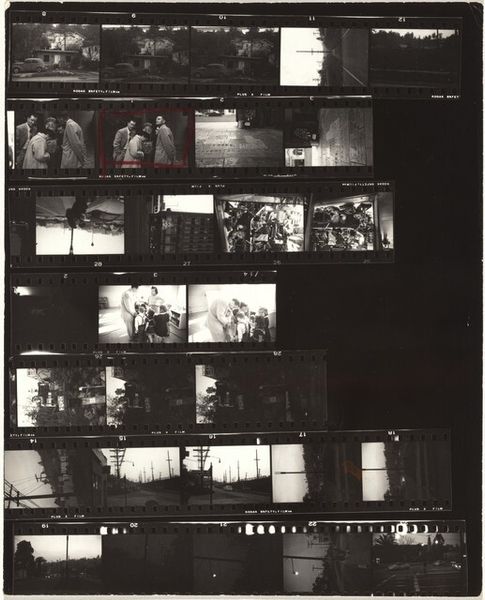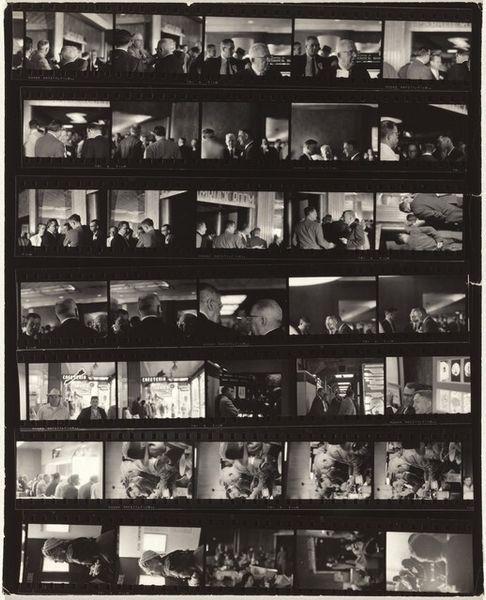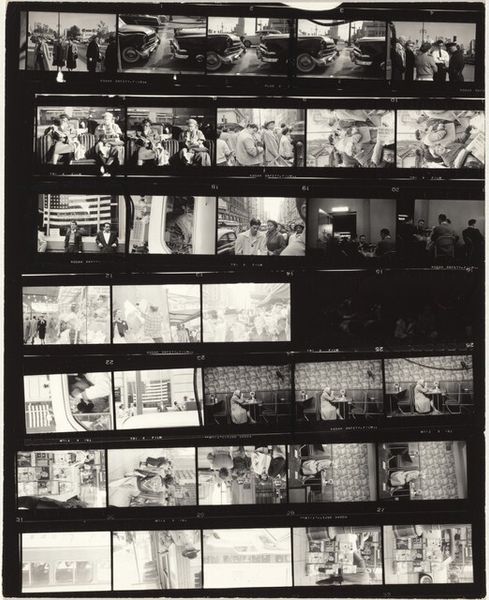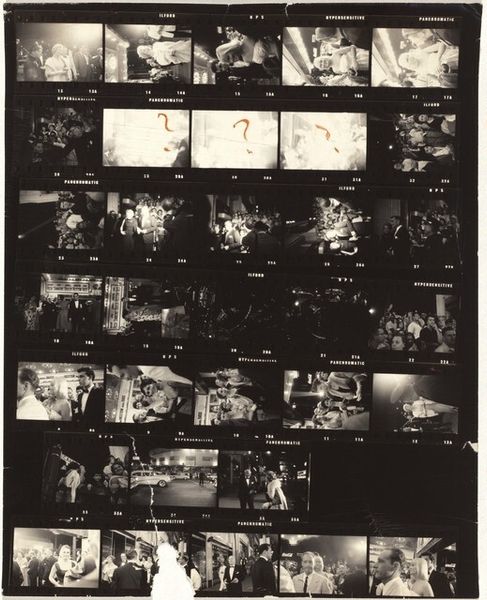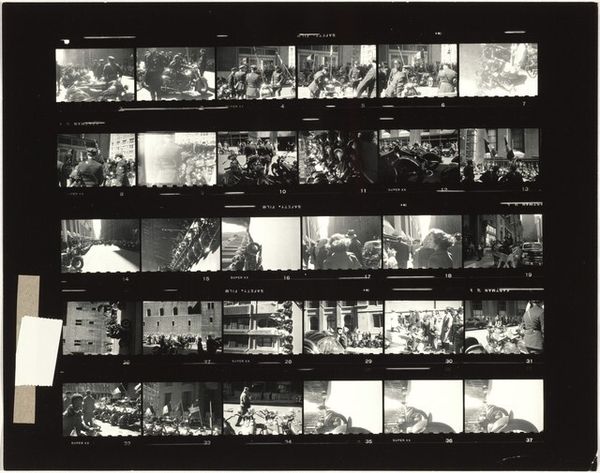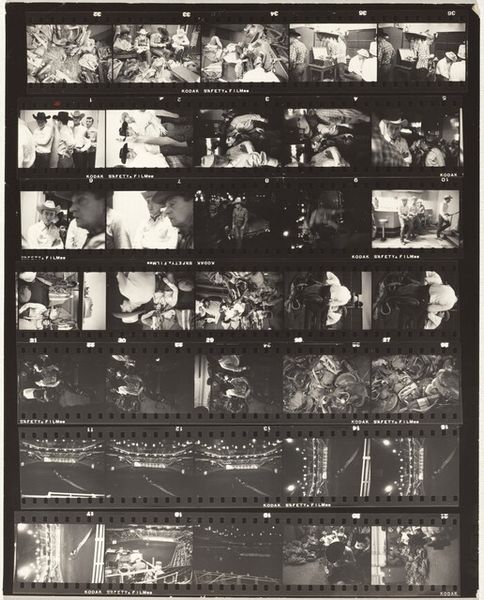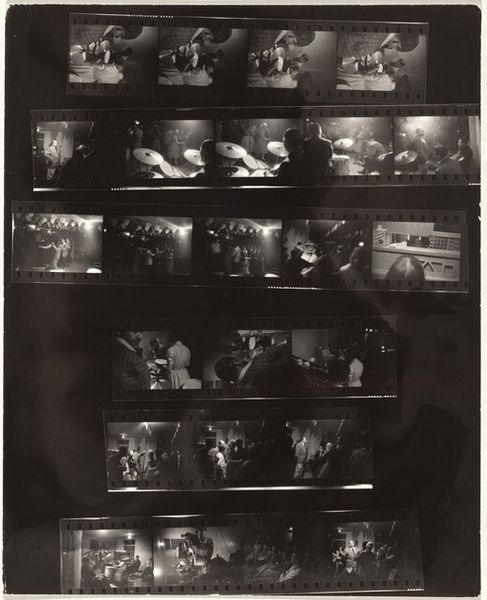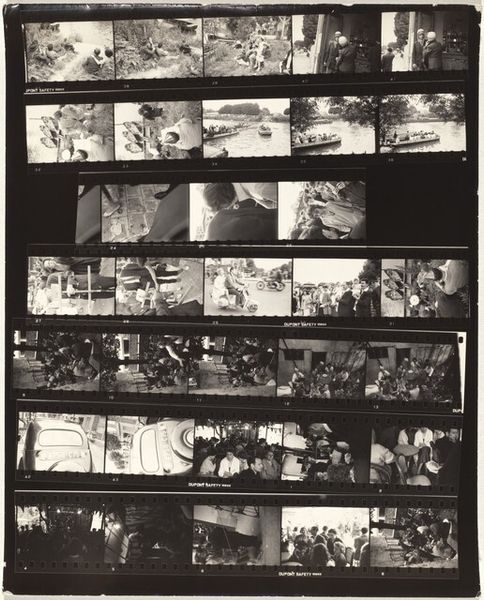
photography, gelatin-silver-print
#
archive photography
#
street-photography
#
photography
#
black colour
#
gelatin-silver-print
#
modernism
Dimensions: sheet: 25.2 x 20.2 cm (9 15/16 x 7 15/16 in.)
Copyright: National Gallery of Art: CC0 1.0
Curator: Robert Frank’s gelatin silver print, "New York Times" ideas no number, dating from around 1957-58, immediately grabs you with its raw energy. Editor: My first impression is a grid of possibilities—fragments of city life, shadows, and half-seen faces. A visual diary page, I suppose? The contact sheet is laid bare as content and concept simultaneously. Curator: It feels like an exposed nerve, doesn't it? Frank’s process becomes part of the story here, the physical strip offering glimpses into the artist's creative mind. He lays bare, indeed, both the process and subject. The use of gelatin silver lends it a sharp, gritty texture—perfect for capturing the stark realities of New York streets. Editor: Absolutely. Let's think of it from a production perspective. Why this rawness, this immediacy? In many respects, commercial photography in the fifties and its magazines still traded on very glossy, stylized fantasies. This document presents an alternative; the contact sheet reveals and foregrounds what gets left on the cutting room floor by this very industrial complex, while simultaneously subverting any sense of clear and clean authorship. It reveals the photographic labor involved in producing that fantasy. Curator: Precisely, as much as it also rejects what the artist felt the industry demanded! What the "Times," with its production demands, filtered out of a life. Frank, you could argue, reclaims authenticity in its very construction. It feels deeply personal, vulnerable even. It's like he's handing you the unedited story, the outtakes and all, daring you to find meaning in the fragments. Editor: Right, there's that dialectic relationship between the subjective experience of walking through New York as an outsider and then trying to process or represent it back through very manual and very limited means. Every click, every darkroom choice is freighted with importance because those choices have real material effects in constructing Frank’s version of the modern American experience, for himself but, in the longer run, for a culture, still obsessed by his views, that, while maybe now less 'modern,' is surely just as confused! Curator: Indeed. I walk away feeling less certain but more open. Editor: Agreed. More conscious about all that is being concealed and revealed through even simple technologies.
Comments
No comments
Be the first to comment and join the conversation on the ultimate creative platform.

